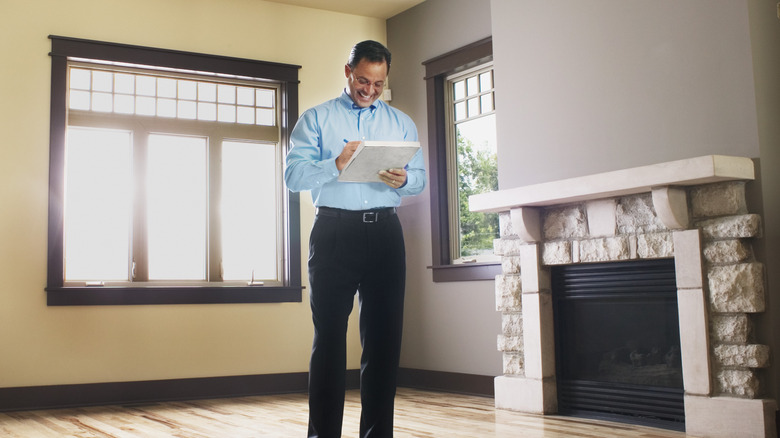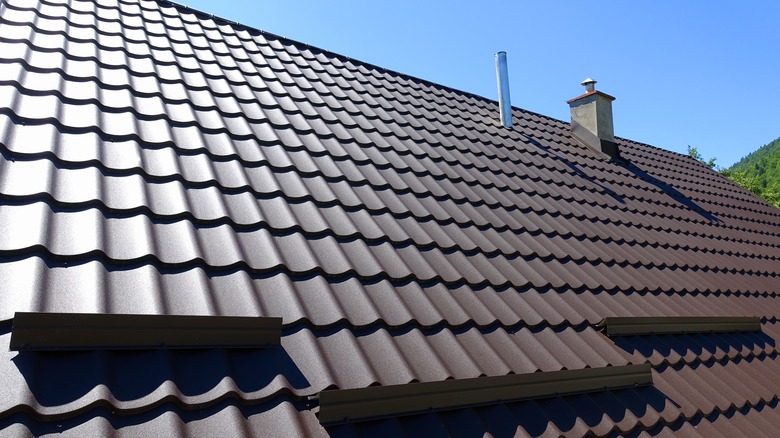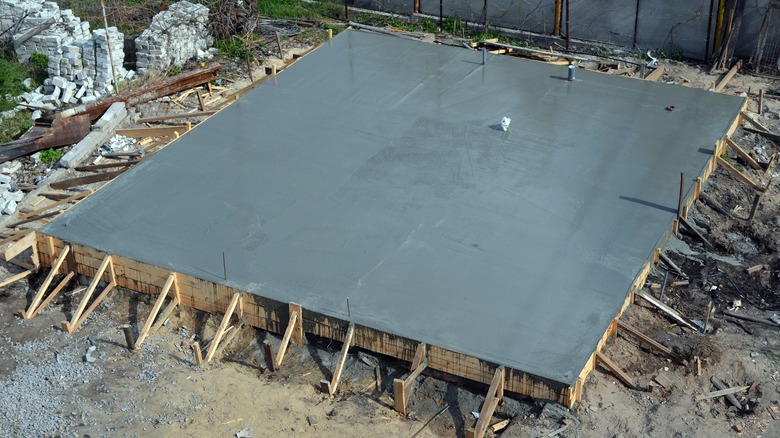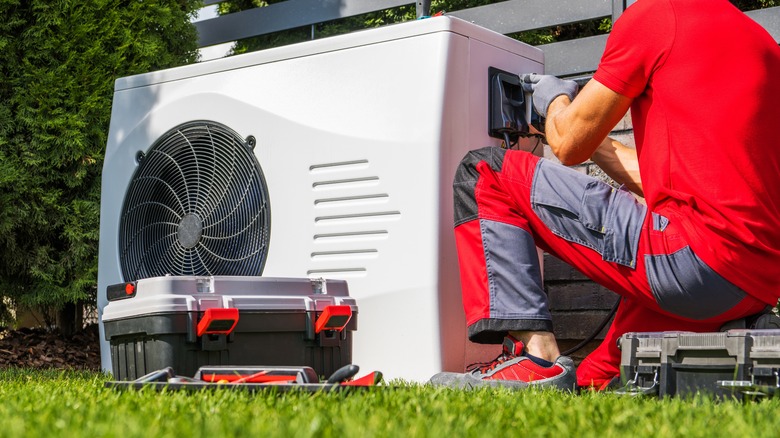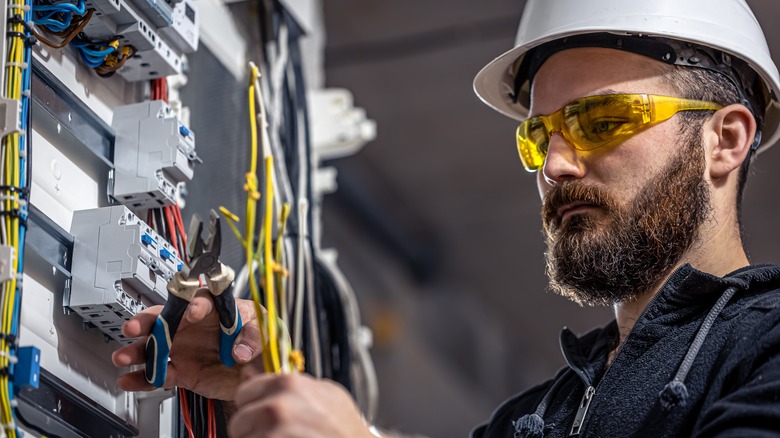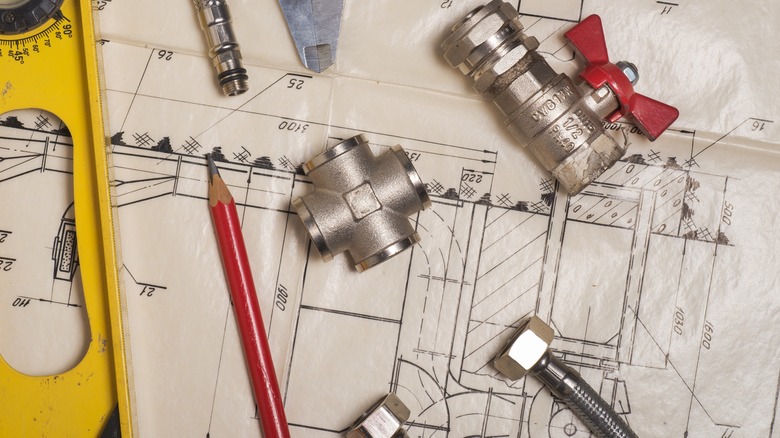What Home Inspectors Look For First During A Visit, According To An Expert
Home inspectors may seem like a daunting bunch. They appear on-site and quickly start poking around the home in search of hidden hazards. Their presence can be nerve-wracking, to say the least, because most homeowners simply don't understand the process of a home inspection. Combined with the fact that buyers should generally put in an offer contingent on the completion of a home inspection, the presence of a professional inspector on your property can shred the resolve of even the most confident seller. The same can be said for a buyer hoping with all their might that a property is as great a purchase as it seemed at first glance.
In an exclusive interview with House Digest, Scot McLean, Founder of Towne & Country Building Inspection in Milwaukee, discusses some of the essential features noted during this important process. McLean has over 20 years of experience and has seen it all. "Home inspections are a great way to ensure that your home is in tip-top shape, but it can be overwhelming if you don't know what the inspector is looking for," McLean says. Doing your due diligence helps alleviate any surprises lurking in the recesses of your home. Also, understanding these critical facets of the process will make you a more knowledgeable homeowner.
What condition your roof is in
The roof is perhaps the most visible action item on an inspector's checklist. However, the sheer size of the fixture means that a casual glance won't reveal all the issues hiding in plain sight. "Home inspectors will check for any roof damage, such as missing shingles, broken tiles, or signs of water damage," McLean says. These act as a starting point for the inspection and are done externally.
That's not all, however. "They will also look closely at how well the roof is ventilated and insulated," McLean adds. "This includes checking to see if all air vents are clear of debris, as well as examining eaves to ensure they're properly sealed and that flashing around chimneys or other structures is intact. Additionally, they'll be sure to check the attic's insulation levels to make sure it meets current standards of energy efficiency."
A home's roof, including the attic space directly beneath it, is one of its most important features. This shores up the stability of a home and will act as the first line of defense in the event of extreme winds or prolonged rain or snowfall. A roof is likely to last 25 years or longer if well-maintained, but this lifespan can be drastically shortened with lousy luck or lax maintenance practices. It's for this reason that inspections begin here.
The state of your foundation
Moving to the bottom of the home, inspectors are keenly interested in the pier and beam or slab foundation that holds the home in place. This acts as the platform for the entire structure, so naturally, it's a key item on any inspector's list. "Foundation issues should not be taken lightly," McLean says. "Home inspectors will examine the foundation walls and crawl spaces while also checking for signs of cracking, shifting or settling, water damage, evidence of termites and other pests, and any other physical damage."
It's vital to ensure that your foundation is in good order. So much so that specialized personnel may be required to complete the assessment. "If a house has been built on a slab foundation, the inspector might request a separate inspection by another professional to get more detailed results," McLean notes. "Additionally, the inspector will check to make sure the building is up to code in terms of its structure and that no modifications have been made without proper permits or approval." Unpermitted construction can threaten the structural viability of the entire home, so this additional review is crucial when signing off on a property.
How your HVAC is holding up
HVAC systems are the next action item on an inspector's list. HVAC installations involve a variety of large and technical components, and homes across the country will make use of a variety of different systems. "The heating, ventilation, and air conditioning system (HVAC) is inspected carefully to make sure it is functioning properly and up to code," McLean says. "This means checking the age and condition of the furnace and the thermostat; making sure that all vents, registers, and ducts are clear and unobstructed; testing for gas leakage in fuel-burning appliances; examining filters for proper replacement frequency and condition; inspecting outdoor condensing units for damage or wear and tear; checking airflow performance levels; and examining any additional features such as humidifiers or dehumidifiers."
The HVAC system exists as a collection of tools spread throughout the home. As a result, this is one of the more cumbersome parts of the inspection. As such, home inspectors often tackle this early on in the process.
Verify your electrical system is safe
One area that homeowners are often woefully under-qualified to speak on is their home's electrical system. Homes are built with complex wiring that brings electricity in from a primary power source and then distributes it through a fuse box and into the property. These systems can be extremely hazardous if installed carelessly or if the components within the setup have become old or damaged. "Home inspectors have a sharp eye on electrical systems, searching for any potential fire hazards or faulty wiring that could pose a risk to the occupants," McLean notes. "From the wires to outlets, light fixtures, and circuit breakers, they check all installations for proper grounding and ensure that circuit breakers are of the correct type and size for their loads."
A home's electrical system doesn't just include hidden wiring. A home inspector must also look over forward-facing extremities that people inside the home interact with daily. "They examine outlets for damage or wear, replace outdated switches, inspect all existing wiring for signs of overheating or improper insulation, test GFCIs (ground fault circuit interrupters) regularly, and note any issues with lights or other fixtures," McLean adds. "They make sure all is in safe working condition and up to code so that households can be free from dangerous electrical conditions."
Look for any plumbing issues
Plumbing installations bring water throughout the home and can cause catastrophic damage (not to mention health concerns) when something goes wrong. Thus, it's essential that inspectors evaluate the condition of your plumbing. "Last but most certainly not least, plumbing is examined," McLean says. "Home inspectors will check both inside and outside pipes for any blockages or leaks, examine drainage systems and gutters to ensure proper flow, measure the water pressure of pumps, inspect the water supply lines for any signs of corrosion or damage, and test hot water heaters for safety."
Pipes throughout the home can degrade significantly if not taken care of. For metal pipes, poor maintenance can lead to deposits entering the inflow stream and potentially cause a health hazard to property residents that may go unnoticed without an inspection. "It's important that everything here is up-to-date and functioning correctly to provide the occupants with a safe, clean drinking water supply as well as a well-maintained sewerage system," McLean says.
